What's New
Displaying results 2131 - 2140 of 4052
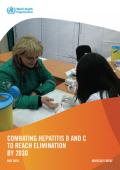
Resource | Publications,
In 2013, viral hepatitis was a leading cause of death worldwide (1.46 million deaths, a toll higher than that from HIV, tuberculosis or malaria, and on the increase since 1990). More than 90% of this burden is due to the sequelae of infections with the hepatitis B virus (HBV) and hepatitis C virus (HCV).
Prevention can reduce the rate of new infections, but the number of those already infected would remain high for a generation. In the absence of additional efforts, 19 million hepatitis-related deaths are anticipated from 2015 to 2030. Treatment now can prevent deaths in the short- and medium term.

Resource | Publications,
This booklet includes a popular version of the violence against women and girls section of The global plan of action to strengthen the role of the health system within a national multisectoral response to address interpersonal violence, in particular against women and girls, and against children.

Resource | Publications,
The Global Fund is partnering with governments, medical experts, advocates, civil society and people living with HIV, TB and malaria to fight the three diseases in the Asia-Pacific region. A total of US$6.6 billion has been invested in treating and preventing the diseases in the Asia-Pacific region, and in building more resilient and sustainable systems for health. This equates to approximately one-quarter of total Global Fund financial resources.
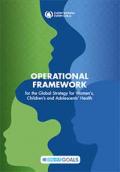
Resource | Tools,
This Operational Framework is intended to accompany the Global Strategy and to serve as a resource for national governments and the wide diversity of stakeholders within countries whose contributions are vital to improving the health and well-being of women, children and adolescents – including civil society, the private sector and development partners. It offers guidance and options for consideration as countries translate the Global Strategy into national and sub-national strategies and plans, starting with the period 2016-2020. These strategies can – and should – build on existing country-level processes and plans already underway.
This document is neither a prescriptive nor an exhaustive set of strategies. Instead, it presents objectives to implement the Global Strategy at country level around the nine action areas, including examples of country experiences.
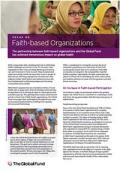
Resource | Publications,
Faith communities play a fundamental role in addressing health challenges around the world. For decades, these organizations have been providing lifesaving prevention, care and treatment to those in need. Many hospitals and clinics around the world can trace their roots to people of faith and are still being managed by churches and other religious bodies. Faith leaders and institutions have also been fundamental in addressing stigma and educating communities about health.
Faith-based organizations are essential providers of rural health care in many parts of the developing world and play an important role in serving the hard-to-reach and poorest population groups. Recognizing these unique achievements and the critical role of faith-based organizations, the Global Fund encourages their participation through diverse ways such as grant implementation, building local capacity, advocacy, and fundraising.
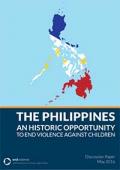
Resource | Publications,
Agenda 2030 provides a focus for renewed ambition. It recognises that peace and sustainable development are interlinked, and sets targets to end all forms of violence against children. The Global Partnership to End Violence Against Children provides a platform for national governments, civil society, faith-based groups, academics, the private sector, international organisations and other partners to work together to deliver these targets.
The Partnership was invited to make a technical support and learning visit to the Philippines (11-15 April 2016). Meetings were held with government and non-governmental partners with the aim of sharing and discussing experience of the Philippines and other countries in preventing and addressing violence against children.

Resource | Publications,
In Laos, LINKAGES is taking both fear of harassment and lack of access out of the testing equation for men who have sex with men (MSM) and transgender women in three communities. The project introduced a community-based model of HIV testing with OraQuick—a relatively new rapid oral HIV test that requires neither specialized equipment nor highly trained providers to administer it. Community-based testing with OraQuick has numerous benefits.
After the first three months of implementation, CBSs proved that they could reach significant numbers of MSM and trans women with HIV testing using OraQuick. Between October and December 2015, LaoPHA CBSs tested 789 MSM and transgender women using OraQuick: 773 were screened nonreactive (HIV negative), 14 reactive (presumed HIV positive, but needs another test to confirm the results), and 2 invalid. Out of the 16 people who tested reactive or invalid, only 5 went for a confirmatory HIV test. All five were confirmed HIV positive and subsequently enrolled in care.
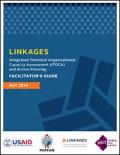
Resource | Tools,
LINKAGES Integrated Technical Organizational Capacity Assessment (ITOCA) and Action Planning: Facilitator's Guide is designed to train LINKAGES’ teams to implement ITOCA. The activities are illustrative, and every facilitator should adapt and adjust his/her content to match the organizational culture and collaboration style, as well as his/her personal preferences for working with groups.
This guide covers 14 ITOCA capacity areas. The areas were identified using previous Pact capacity assessments, a review of similar assessments, and with consideration to the work specific to LINKAGES. Each partner assessment should tailor the ITOCA tool to the work of the particular partner. The recommended number of capacity areas for an assessment is between seven and 10. The capacity areas and statements of excellence1 should be reviewed carefully by LINKAGES team members who can together decide which capacity areas to maintain, delete, or reduce in size based on their knowledge of the local partners with whom the ITOCA will be facilitated.
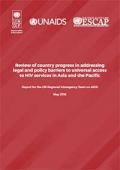
Resource | Reviews and Snapshots,
The purpose of this report is to highlight progress, challenges and future priorities in addressing legal and policy barriers to achieving universal access to HIV services in Asia and the Pacific. It will inform country preparations for the United Nations General Assembly High-Level Meeting on Ending AIDS (HLM) to be convened in New York, 8-10 June 2016, as well as subsequent actions at regional and country level towards ending AIDS, protecting human rights and achieving the SDGs.
The report draws from a desk review of data reported from countries on these legal and policy reviews and consultations, and related developments in the legal and policy environment for HIV responses in Asia and the Pacific.
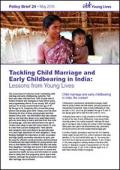
Resource | Publications,
In this policy brief, Young Lives looks at child marriage rates in India to help inform policy and programming efforts.
Based on a sample of 1000 19-year-olds in the states of Andhra Pradesh and Telangana, they found that 28% of girls and just 1% of boys were married before the age of 18. By the age of 19, a majority (59%) of married young women had already given birth. The brief provides five promising areas of intervention to address child marriage and early childbearing.





